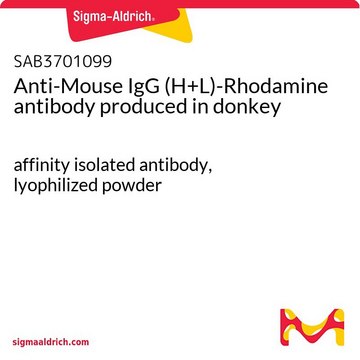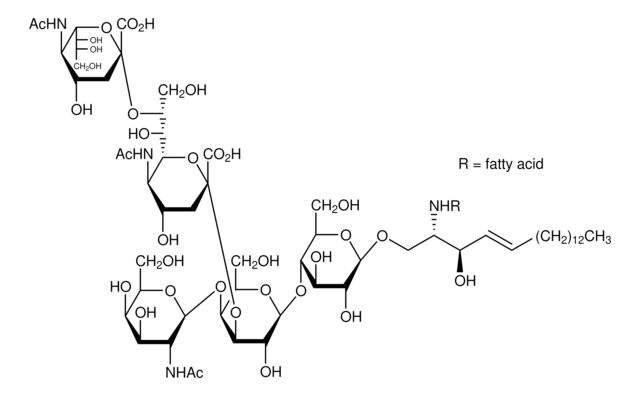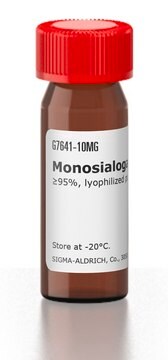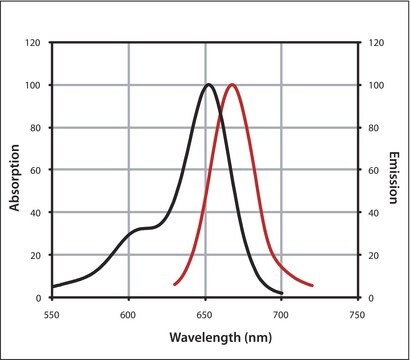AP192R
Donkey Anti-Mouse IgG Antibody, Rhodamine conjugate, Species Adsorbed
Chemicon®, from donkey
Sign Into View Organizational & Contract Pricing
All Photos(1)
About This Item
UNSPSC Code:
12352203
eCl@ss:
32160702
NACRES:
NA.46
Recommended Products
biological source
donkey
Quality Level
conjugate
TRITC conjugate
rhodamine conjugate
antibody form
affinity purified immunoglobulin
antibody product type
secondary antibodies
clone
polyclonal
species reactivity
mouse
manufacturer/tradename
Chemicon®
technique(s)
immunofluorescence: suitable
shipped in
wet ice
target post-translational modification
unmodified
General description
Immunoglobulin G (IgG), is one of the most abundant proteins in human serum with normal levels between 8-17 mg/mL in adult blood. IgG is important for our defence against microorganisms and the molecules are produced by B lymphocytes as a part of our adaptive immune response. The IgG molecule has two separate functions; to bind to the pathogen that elicited the response and to recruit other cells and molecules to destroy the antigen. The variability of the IgG pool is generated by somatic recombination and the number of specificities in an individual at a given time point is estimated to be 1011 variants.
Specificity
Mouse IgG
WAVELENGTH:
Absorption peak = 550 nm, Emission peak = 570 nm.
WAVELENGTH:
Absorption peak = 550 nm, Emission peak = 570 nm.
Application
Donkey anti-Mouse IgG Antibody, Rhodamine conjugate, Species Adsorbed is an antibody against Donkey Mouse IgG for use in IF.
Research Category
Secondary & Control Antibodies
Secondary & Control Antibodies
Research Sub Category
Secondary Antibodies Adsorbed for Dual Labeling
Secondary Antibodies Adsorbed for Dual Labeling
Suggested dilution for most applications: 1:50-1:200
Optimal working dilutions must be determined by end user.
Optimal working dilutions must be determined by end user.
Physical form
Lyophilized. Buffer = 0.01 M Sodium Phosphate, 0.25 M NaCl, pH 7.6 with 15 mg/mL BSA, and 0.05% sodium azide.
RECONSTITUTION:
Reconstitute with 500 μL of sterile distilled water.
RHODAMINE/PROTEIN:
Approximately 0.40 (A550/A280).
RECONSTITUTION:
Reconstitute with 500 μL of sterile distilled water.
RHODAMINE/PROTEIN:
Approximately 0.40 (A550/A280).
Storage and Stability
Maintain lyophilized product at 2-8°C for up to 12 months. After reconstitution the product is stable for several weeks at 2-8°C as an undiluted liquid. For extended storage after reconstitution, add an equal volume of glycerol to make a final concentration of 50% glycerol followed by storage at -20°C in undiluted aliquots for up to 12 months. Please note the concentration of protein (and buffer salts) will decrease to one-half of the original after the addition of glycerol. Avoid repeated freeze/thaw cycles.
Legal Information
CHEMICON is a registered trademark of Merck KGaA, Darmstadt, Germany
Disclaimer
Unless otherwise stated in our catalog or other company documentation accompanying the product(s), our products are intended for research use only and are not to be used for any other purpose, which includes but is not limited to, unauthorized commercial uses, in vitro diagnostic uses, ex vivo or in vivo therapeutic uses or any type of consumption or application to humans or animals.
Not finding the right product?
Try our Product Selector Tool.
Hazard Statements
Precautionary Statements
Hazard Classifications
Aquatic Chronic 3
Storage Class Code
11 - Combustible Solids
WGK
WGK 3
Certificates of Analysis (COA)
Search for Certificates of Analysis (COA) by entering the products Lot/Batch Number. Lot and Batch Numbers can be found on a product’s label following the words ‘Lot’ or ‘Batch’.
Already Own This Product?
Find documentation for the products that you have recently purchased in the Document Library.
Distribution of gephyrin-immunoreactivity in the trigeminal motor nucleus: an immunohistochemical study in rats.
Zhihong Li,Shunnan Ge,Fuxing Zhang,Ting Zhang,Noboru Mizuno,Hiroyuki Hioki,Takeshi Kaneko et al.
Anatomical Record (Hoboken, N.J. : 2007) (2007)
Polyclonal origin of hormone-producing cell populations evaluated as a direct in situ demonstration in EGFP/BALB/C chimeric mice.
Ma, DF; Sudo, K; Tezuka, H; Kondo, T; Nakazawa, T; Niu, DF; Kawasaki, T; Mochizuki et al.
The Journal of Endocrinology null
Orexin-B-like immunoreactivity localized in both luteinizing hormone- and thyroid-stimulating hormone-containing cells in the Nile tilapia (Oreochromis niloticus) pituitary.
H Suzuki, A Matsumoto, T Yamamoto
Tissue & cell null
Dentate development in organotypic hippocampal slice cultures from p35 knockout mice.
H Jurgen Wenzel,Catherine T Tamse,Philip A Schwartzkroin
Developmental Neuroscience null
Effects of maternal antenatal glucocorticoid treatment on apoptosis in the ovine fetal cerebral cortex.
Malaeb, SN; Hovanesian, V; Sarasin, MD; Hartmann, SM; Sadowska, GB; Stonestreet, BS
Journal of Neuroscience Research null
Our team of scientists has experience in all areas of research including Life Science, Material Science, Chemical Synthesis, Chromatography, Analytical and many others.
Contact Technical Service







